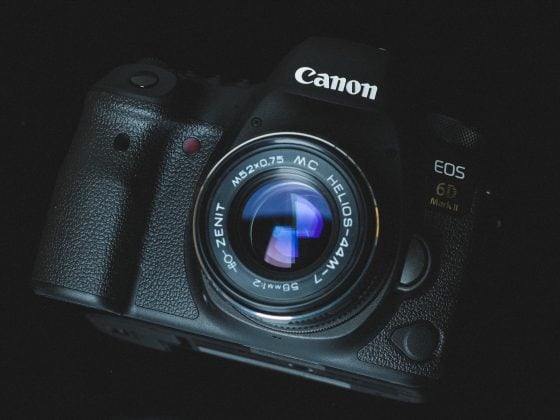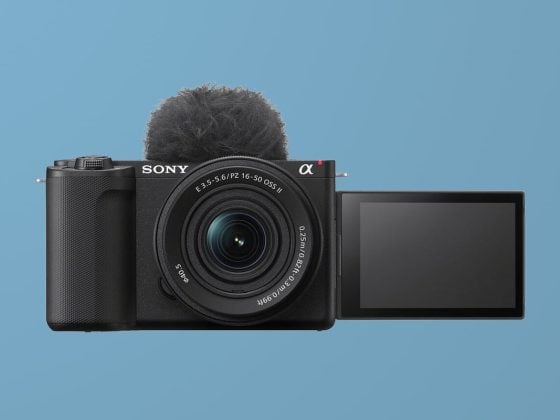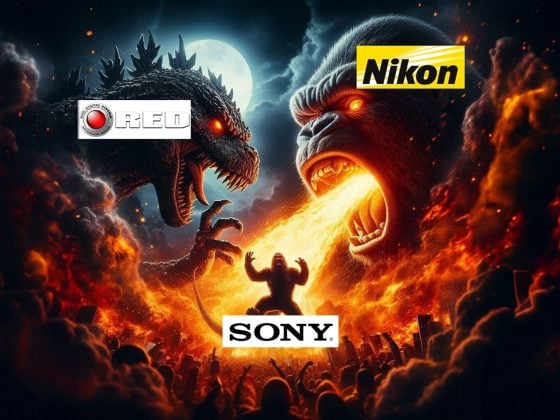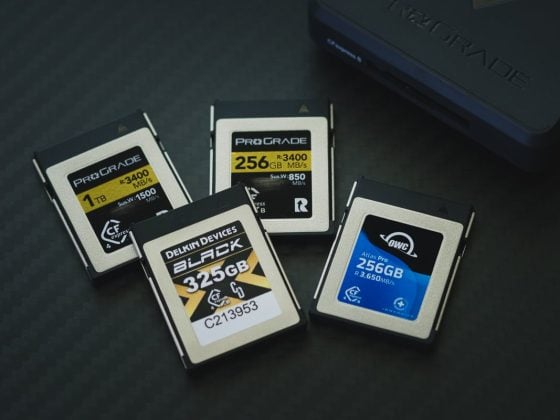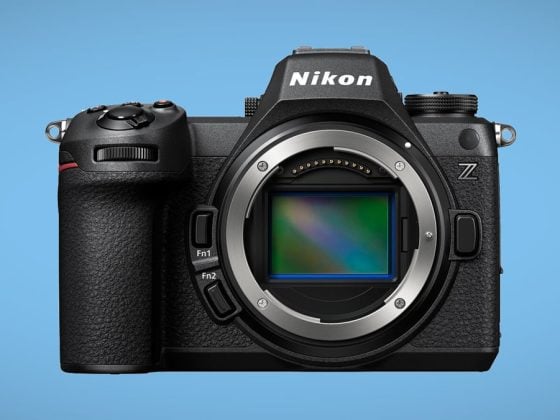The Canon 6D Mark II is the new “entry-level” full-frame camera from Canon and it’s a beast! Shooting with the 6DII was the most fun I’ve had with a full-frame camera in a long time. Partly because of its full-frame sensor, partly because the camera has a lot of great features that you just don’t find in many full-frame cameras, like the vari-angle touch screen.
I really could see myself buying this camera if I was in need of another full-frame camera. I currently have the Sony A7rII and the Canon 5D II.
Specs & Order Links
Sensor – 26.2MP Full-Frame CMOS Sensor with DIGIC 7 Processor
45-Point All-Cross Type AF System
Video: 1080p60 – Digital IS
Screen: 3″ 1.04m-Dot Vari-Angle Touchscreen
Continuous Shooting: 6.5 fps
Built-in GPS, Bluetooth & Wi-Fi with NFC
Dust and Water Resistant
Canon 6D Mark II – Amazon / Adorama / BHphoto
Canon 6D Mark II – First Impressions
What I Love | The Touchscreen
I love the screen. It swivels out, it’s well-built with a 3″ 1.04m-Dot pixel resolution. This means it has better pixel resolution than most screens. I think the Fujifilm X-Pro2 is somewhere around that level, but most cameras are usually around 900k-Dot and when you see it, the image on the rear screen is very clear.
This is one of the first cameras where I actually fell in love with the touch screen. The Nikon D7500 had a good touch screen as well, but the vari-angle on this new 6D II is a lot more fun. It allows you to get at interesting angles without breaking your back, like when you’re shooting stealthy street photography or shooting low to the ground with your kids . . . or cats.
Very Usable Live View / Mirror Lockup
When you flip the camera into LiveView, you can use the touch screen to set your focus point and trigger the shutter. I found it worked best if I used the live view to adjust focus while using the shutter release to take the picture.
When in live view, the focus was fast enough, you’ll notice that it’s slower than focusing with the mirror down through the ovf, but if you find a good point of contrast and try to focus on that, it works very well.
There is also some lag after taking a picture before the live view screen refreshes. It takes a second or two seconds. This doesn’t stop you from taking more pictures so you can burst all day long, it just takes longer to refresh the screen when you are bursting. This is something that should be improved in future models to make it more competitive with mirrorless cameras.
I found myself shooting about half the time through the viewfinder or OVF and half the time with the rear screen. That’s just the way I shoot with any of my cameras and it was nice that the Canon 6D II performed well even though it’s not a mirrorless camera.
If Canon can continue to improve the autofocus speed with the mirror lockup, I think they could win back a lot of those mirrorless converts.
Great Battery Life
When shooting in live view mode you will notice it drains the battery life quite a bit more. But the battery life was typical of any Canon. It’s good.
I did my entire memory card speed tests and spent a full day shooting and only got the battery down to about 25%. That’s almost 3,000 photos to do all that (most of it bursting). This would be unheard of with a mirrorless camera especially the Sony A7rII where I’ll burn through one battery just shooting one night of sunsets.
Smart And Accurate AWB & Exposure
You don’t see a lot of people talking about this one, maybe because they don’t notice it or they don’t care. But, when I’m regularly shooting with my Sony and then pick up a Canon, I immediately notice that it’s better at detecting the correct white balance and exposure.
In the kitchen and living room of my apartment the lighting is pretty mixed and every time I shoot anything in this area with my Sony or even Fujifilm, it always comes out looking like crap, but the Canon somehow makes it look good and the colors look natural. And this isn’t just in my living room, it’s everywhere. Shooting sunsets, shooting at the malls, in Antelope Canyon, AWB always seems more accurate and natural with Canon. I’ve always noticed this about Canon, Nikon, or even GoPro for that matter and I think it’s an extremely important characteristic of Canon that often goes overlooked.
Canon 6D II | Technical Overview
All around the sensor in the Canon 6D II performs well across the board, it has nice highlight recovery capabilities almost on par with the Sony A7rII. It also has decent ISO performance. Where it’s lacking is with dynamic range, but it’s still totally fine for real-world use.
Is Dynamic Range That Important?
For any normal person who knows how to correctly expose their images, the dynamic range is more than acceptable and a moot point if you shoot JPEG since JPG images do not preserve the same level of image data found in RAW files.
I’ll do a whole rant on this in another article, but basically having 14 stops of dynamic range isn’t a game-changer, nor is it even useful. It’s like having a car with 600hp, it’s fun to lift the hood and look at the engine while it idles. That’s about it and that’s basically what’s happening in the camera world today.
Here is an example of what recovering a shot that was 4-stops underexposed looks like compared to the Sony A7rII, which has some of the best dynamic range out there.
Here is what 4-stops underexposed looks like
As you can see, the Canon 6D II is more than capable of recovering some pretty dark shadows. But yes, it’s not as good as the Sony A7r II, but that camera has 99 other problems and the Canon 6D II is still a vastly superior camera. Vastly!
ISO Performance
I shoot a lot with APS-C cameras where ISO performance usually is not quite as good as with full-frame cameras. Compared to my X-T2 or X-Pro2, the high ISO performance in the Canon 6D II feels only a little better where my limit of usability is really at 12800 ISO, which I’ve always thought was reasonable.
The Sony A7r II, in comparison, has a slight edge on high ISO performance.
For all my sample photos for this review, I shot at the grand opening of the Westfield Mall here in Century City Los Angeles, and around Westwood. The time was around sunset until it got dark. I never really felt I was punished by high ISO as I would be, say on my old Canon 5DII or even my old Fujifilm XT1. All my images held up very nicely and I wasn’t even shooting on a fast lens. I was using the Canon 40mm f2.8 pancake lens, so the major problem I was having had to do with motion blur from shooting at a slower shutter, rather than poor ISO performance.
Minimum Shutter Speed Settings!
This leads me to another awesome feature that has to do with ISO and shutter settings.
The Canon 6D II allows you to set a minimum shutter speed! So if you shoot on aperture priority and your shutter and ISO are on auto, you can set the shutter to max out at a low number. I usually do 1/60 or 1/100 so you don’t get into too much trouble with motion blur or camera shake.
I think this is Canon’s first consumer camera to allow you to do this! I’m not even sure if the Canon 5D IV lets you do this. I can’t remember, but none of the rebels do it, where just about every other camera in the world lets you do this nowadays. So it was nice to see Canon finally putting this feature into their cameras since it’s so useful.
Memory Card Performance
Canon has always been a champion here. It’s capable of writing to UHS-I memory cards at 75MB/s.
While it doesn’t support UHS-II memory cards, 75MB/s is still very fast. Actually, that’s about as fast as the Panasonic GH5 performs which does support UHS-II memory cards.
The Sony A7rII tops out at 35MB/s.
So what does this mean to have fast memory card write speeds? It means you won’t get hung up waiting for a buffer to clear. Something that happens to me all the time with Sony cameras.
If you’re wondering; the best memory card for the Canon 6D II is the Sandisk Extreme Pro, but be sure to check out my speed test to see the fastest memory cards for the Canon 6D II.
Video Capabilities
This is where the camera sort of underperforms. Not that it doesn’t shoot good video, people used to shoot feature films on the 7D or even the Canon 5D II without ever complaining. Now today I guess that’s not good enough because now everyone thinks they need 4k.
I personally don’t really care about video features in a photography camera. If I’m shooting a movie, I’ll rent a real camera designed for the task, if I were to vlog or make landscape or travel videos, I would probably keep it 1080 just because 4k is too much of a bitch to work with in editing. So if you NEED 4k video, then yeah, this camera isn’t for you.
Using Manual Lenses | Retro Lenses
I can’t get too much into this because I didn’t test too many retro lenses on the Canon 6DII, however, this is actually a great camera to shoot retro lenses or manual lenses with. You will have to be careful though because some lenses will get in the way of the mirror. For example, the Helios 44-4 lens if screwed on as tight as it should be, will interfere with the mirror. The Helios 44-7 will not. So you have to be careful which lenses you use.
When using the Helios 44-7, I found I could effectively focus when in live view because of where they put the magnification button on the back of the camera. It’s just below the mirror lockup button.
So what you do is, put the camera in live view, then push the focus to magnify button to check your focus and you’re good to go. The focus magnification is also very quick and responsive so I would be very comfortable shooting with manual lenses on this camera for that reason. For these shots, I was using the Helios 44-7 at f2.
Unfortunately, Canon does not offer focus peaking or any other focus assistance for using manual lenses. So if you’re shooting wide open or with a very shallow depth of field, you will need to zoom in to check focus. Actually, that’s not completely true, They have a green focus dot in the OVF that lets you know when you hit proper focus, I never really loved this though.
Canon 6D Mark II Review | Bottom Line
I didn’t go into every feature of this camera since I don’t own it and don’t want to pretend to be a master of it. I have however shot with the Canon 5D II for years, and I do test every camera available to the mainstream consumer. So in this review, I really just wanted to share with you all the features that stood out to me. I’m sure I’ve missed some things that will bother some people and some things that people will love.
The bottom line here is, if you care about photography and you’re actually a photographer, you’ll love this camera. If you’re someone who buys cameras to tinker with (like the guy that buys the 600hp car so he can lift the hood and stare at the engine while it idles), then I’m sure you’ll find flaws with the 6DII but understand you are not Canon’s target audience. Canon has always been about making simple cameras that are easy to use for the mainstream user who doesn’t want to be buried in over-complicated design and useless features.
Personally, this is my favorite Canon I’ve shot with to date, I like it more than the 5D IV because of the tilt screen and if I were in the market for a full-frame DSLR by Canon, I wouldn’t hesitate for a second on this one. I would even probably buy this over the Canon 5D IV. As far as there is any issue with dynamic range, this is not an issue at all in real-world photography. It’s only a problem among the mouth-breathing alpha nerds that spend their lives shooting test sheets.
Canon 6D II – Amazon / Adorama / BHphoto
Canon 40mm f2.8 – Amazon / Adorama / BHphoto
More Canon 6D II Sample Photos
| **This website contains affiliate links. We will earn a small commission on purchases made through these links. Some of the links used in these articles will direct you to Amazon. As an Amazon Associate, I earn from qualifying purchases. |





































